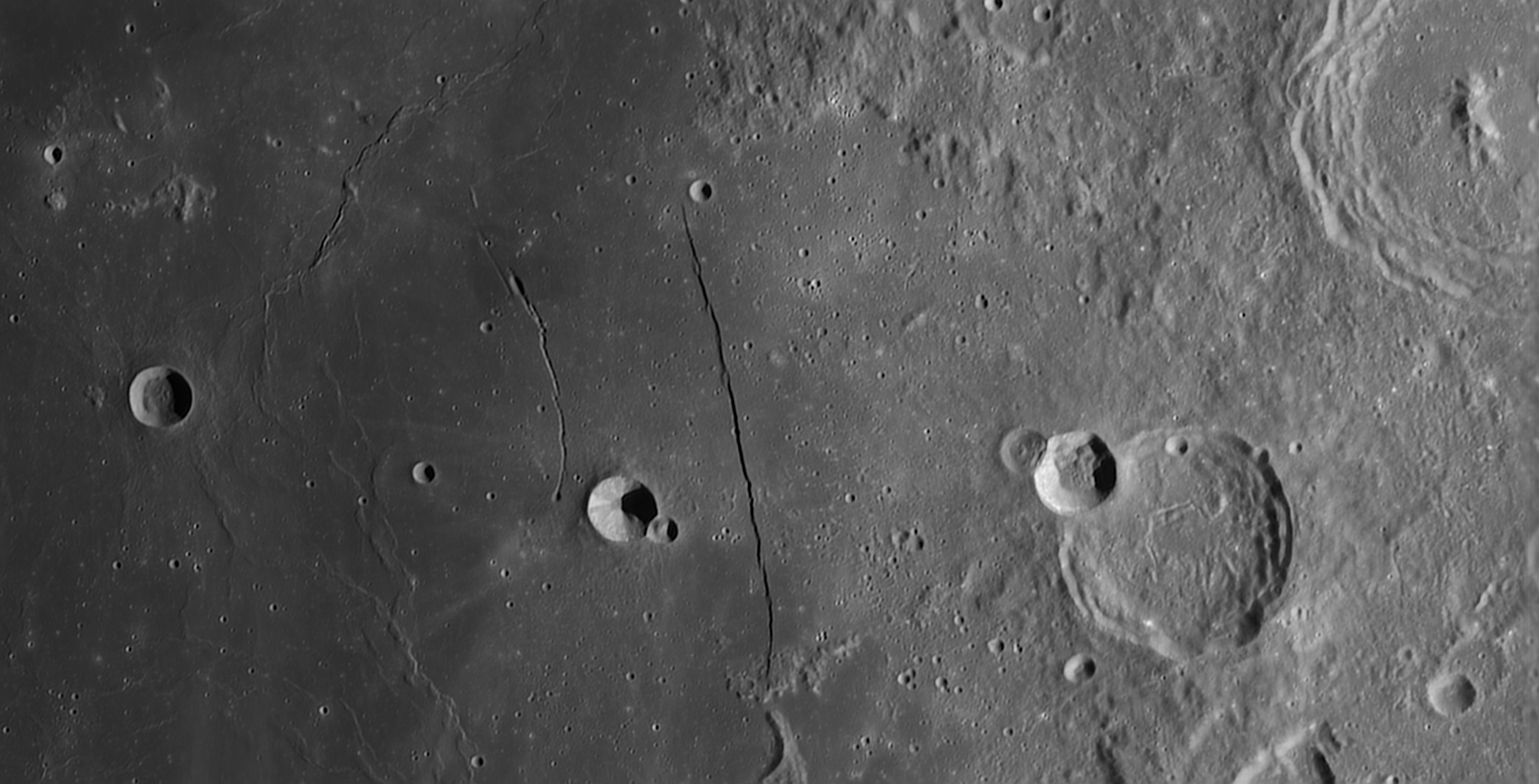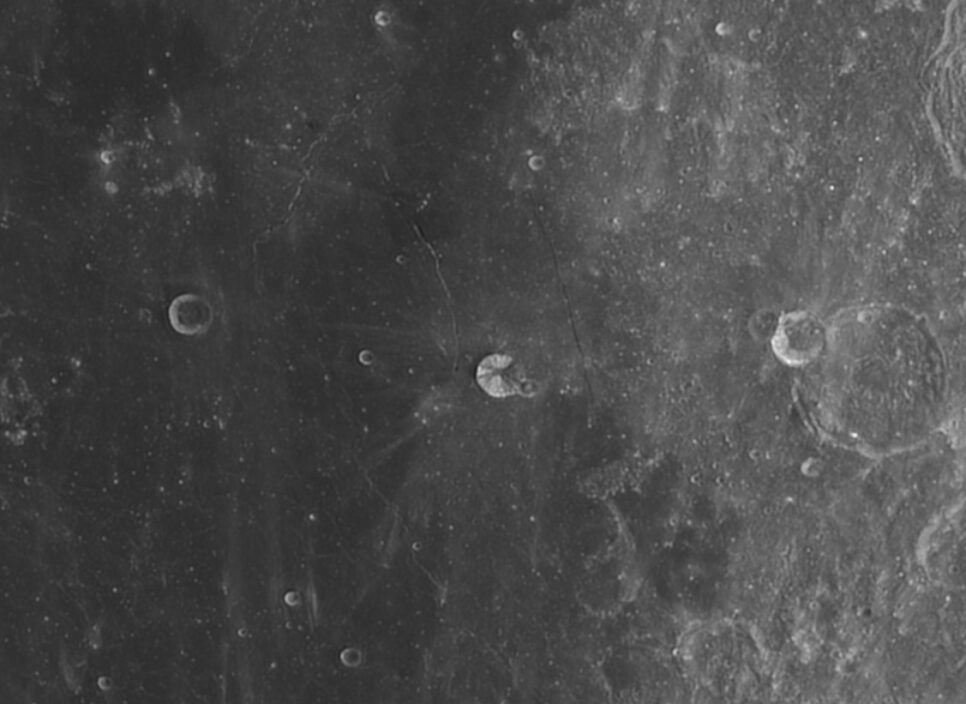La Rupes Recta, di gran lunga la più famosa tra le faglie lunari, si produsse probabilmente per un cedimento strutturale avvenuto al bordo del Mare delle Nubi. Lunga circa 150 km per 500 metri di altezza massima, la sua osservazione diviene proficua solo per bassi angoli di illuminazione; nei pressi del plenilunio, si riesce a stento ad intuirne la presenza.
(ENG) The Straight Wall is by far the most famous of the lunar faults, probably produced by a structural collapse at the edge of the Sea of Clouds. About 150 km long with a maximum height of 500 metres, its observation becomes profitable only for low lighting angles; near the full moon, you can barely discern its presence.
Zona della Rupes Recta
Non solo la Rupes Recta (in questa ripresa se ne apprezza anche l’estensione in altezza) ma tutta la zona circostante è ricca di caratteristiche interessanti. Grazie al seeing favorevole, l’immagine mostra numerosi dettagli: la rima di Birt (a sinistra, parallela alla Rupes Recta) appare costituita da una catena di craterini, mentre il fondo di Thebit (il grande cratere a destra) appare molto irregolare. Sulla parte superiore della Rupe è appena visibile una debolissima rima che corre ortogonalmente ad essa.
(ENG) Not only the Straight Wall (in this image you can also appreciate its extension in height) but the entire surrounding area is full of interesting features. Thanks to the favorable seeing, the image shows a number of details: the rima of Birt (on the left, running parallel to the Rupes Recta) appears to be made up of a chain of craterlets, while theì floor of Thebit (the large crater on the right) appears very irregular. On the upper part of the Wall a very faint rille is just visible, running orthogonally to it.
Rupes Recta e Birt a mezzogiorno
Questa ripresa, effettuata con Luna praticamente piena, mostra una irriconoscibile Rupes Recta (giuriamo che c’è…), e, al centro, il cratere Birt con la sua forma ad imbuto.
(ENG) This image (taken at full Moon) shows an unrecognizable Rupes Recta (I swear it’s there…) together with the bowl-shaped Birt crater (center).

